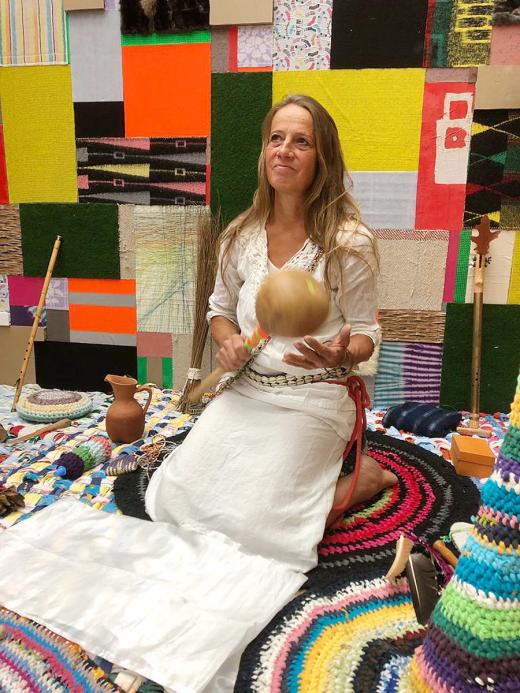Magic#2 Delphi
Were or are "women" magicians, witches and prophets? In Romanticism, women were responsible for the unfathomable, seductive and also perishable. Doro Seror shows her magical powers using the personal items of the visitors.
The name Delphi is derived from the Greek word δελφύς (delphys) for "womb". In the temple of the Oracle of Delphi the earth goddess Gaia was originally worshiped under the name Delphyne, "womb of creation". Her daughters, the Phythiai (named after her husband Phyton) were the priests of this important oracle of antiquity and prophesied historical events. Apollo later killed the Delphyne and took control of the oracle.
It is believed that the temple was in a place where gases escaped from the earth and thus put the priestesses in a halucinogenic state so that they could use an unconscious source for their prophecies. In shamanism, incense is carried out in order to establish a connection to the non-ordinary reality. Using objects such as stones, shells and other objects (fetishes) that are charged with meaning, shamanic practitioners make prophecies.
"I've been dealing with the level of meaning of used objects and worn clothing for a long time. The objects and textile materials that I use in the artistic context were and are always part of other (own) work or were given to me by other people in connection with a story. So the materials of the walls ("Murales", 2020) were created exclusively from materials charged with meaning, memory and stories. This level can be felt and thus creates a magical room. “
I sit in the magical room that I have created and sink into a kind of trance with the objects brought by the visitors and my "magic hat" that shields me from ordinary reality. The messages that I get in the non-ordinary reality are communicated to the respective visitor. The personal interaction with the individual and the intimate messages to the visitors create a private space in the museum.
The visitors experience a museum of reversal, because they do not watch a work of art, but are perceived individually by a work of art. The artist as a prophet indicates the direction in which museum spaces and the relationship between artist and art consumer will develop in the future.
Installation:
Room made from the work "Murales",
handwoven carpets, magic objects
Denkraum Deutschland FEMININ
Pinakothek der Moderne; Munich
Pics by Asta von Unger,
Doro Seror
The name Delphi is derived from the Greek word δελφύς (delphys) for "womb". In the temple of the Oracle of Delphi the earth goddess Gaia was originally worshiped under the name Delphyne, "womb of creation". Her daughters, the Phythiai (named after her husband Phyton) were the priests of this important oracle of antiquity and prophesied historical events. Apollo later killed the Delphyne and took control of the oracle.
It is believed that the temple was in a place where gases escaped from the earth and thus put the priestesses in a halucinogenic state so that they could use an unconscious source for their prophecies. In shamanism, incense is carried out in order to establish a connection to the non-ordinary reality. Using objects such as stones, shells and other objects (fetishes) that are charged with meaning, shamanic practitioners make prophecies.
"I've been dealing with the level of meaning of used objects and worn clothing for a long time. The objects and textile materials that I use in the artistic context were and are always part of other (own) work or were given to me by other people in connection with a story. So the materials of the walls ("Murales", 2020) were created exclusively from materials charged with meaning, memory and stories. This level can be felt and thus creates a magical room. “
I sit in the magical room that I have created and sink into a kind of trance with the objects brought by the visitors and my "magic hat" that shields me from ordinary reality. The messages that I get in the non-ordinary reality are communicated to the respective visitor. The personal interaction with the individual and the intimate messages to the visitors create a private space in the museum.
The visitors experience a museum of reversal, because they do not watch a work of art, but are perceived individually by a work of art. The artist as a prophet indicates the direction in which museum spaces and the relationship between artist and art consumer will develop in the future.
Installation:
Room made from the work "Murales",
handwoven carpets, magic objects
Denkraum Deutschland FEMININ
Pinakothek der Moderne; Munich
Pics by Asta von Unger,
Doro Seror







